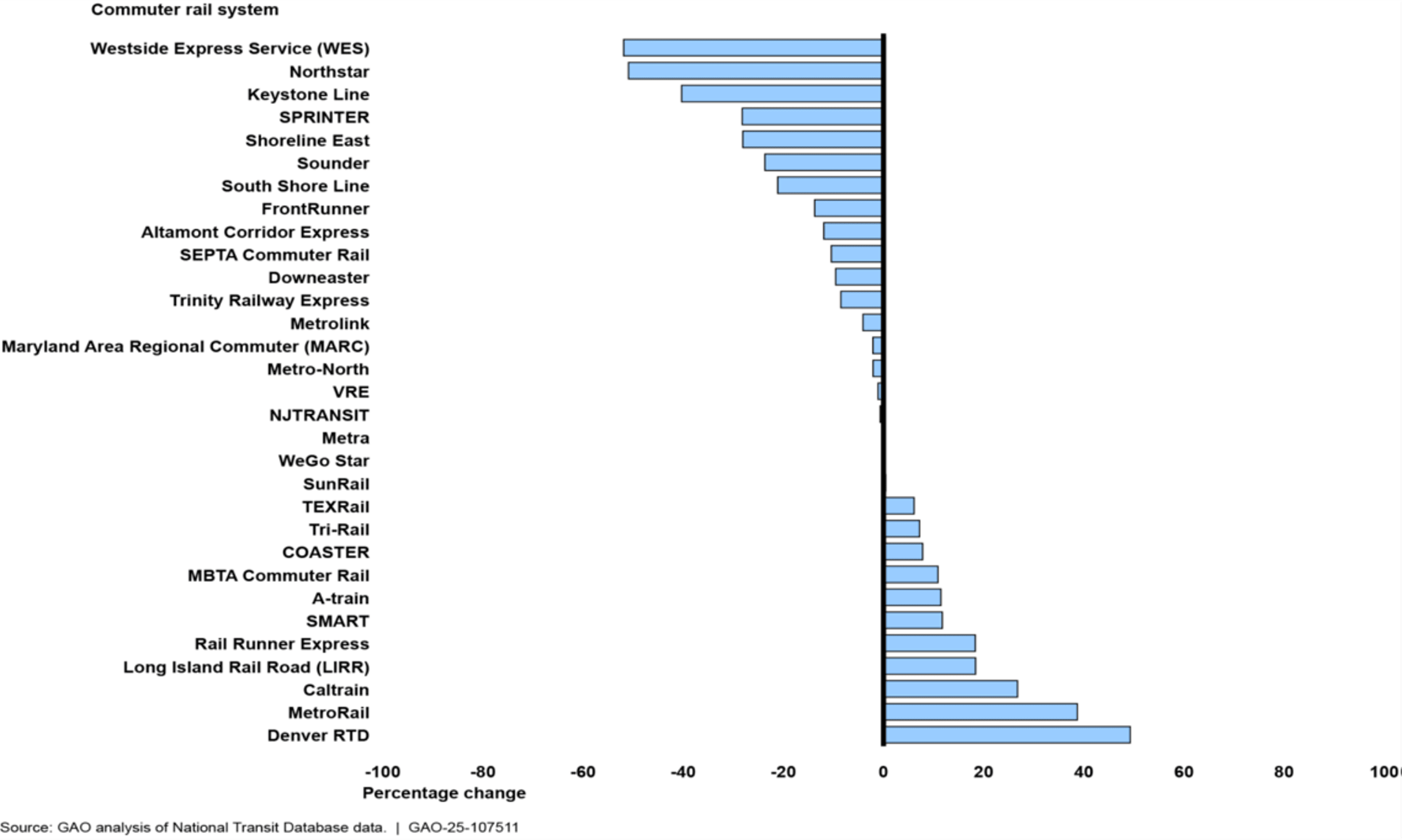
RTD’s commuter rail services saw highest percentage change in total vehicle revenue hours following the COVID-19 pandemic
A recently completed report by the U.S. Government Accountability Office (GAO) found RTD’s commuter rail services experienced the highest percentage change in total vehicle revenue hours following the COVID-19 pandemic.
The GAO’s analysis reviewed ridership data from 31 transit systems across the U.S., and the results, published May 7, found that most commuter rail systems across the nation have failed to regain all the ridership prior to March 2020.

Despite commuter rail ridership numbers lagging nationwide, over half of transit systems are providing commuter rail service near or above pre-pandemic levels. A change in working environments and commuting trends, which includes hybrid and fully remote schedules, are contributing factors to the changes in customer boardings. In addition, officials from seven of the 31 systems said that commuting patterns have changed from the traditional peak periods of a 9 a.m. to 5 p.m. workday.
While most commuter rail systems are offering services and connections from the same stations as before the pandemic, some, including RTD, have pivoted to regain ridership through extending service hours, opening new lines and stations, offering no-cost fares, or seeking other local and federal resources for additional funding. RTD's N Line, which connects Denver with Commerce City, Northglenn, and Thornton, opened for revenue service in September 2020.
RTD, with its Zero Fare for Youth program, approved as a permanent fare change in 2024 following a one-year successful pilot, is one of five agencies in the study that now offer a no-cost youth fare program. RTD’s youth program focuses on increasing access and ridership by directly engaging with and appealing to a new generation of transit customers.
“We're proud that the Denver metro area continues to support our commuter rail network,” Assistant General Manager, Rail Operations, Dave Jensen said. “RTD remains committed to providing the highest quality service possible for our rail services and customers. Since March 2020, we’ve focused on increasing access and enhancing the customer experience, and that work will continue."
According to the report, ridership for all 31 of the systems evaluated has increased steadily since the first half of 2020. Nationally, commuter rail service levels were approximately 2.7% higher for the last six months of 2024 than compared with the same period in 2019.
Commuter rail is an alternative to driving between suburbs and city centers, such as the lines that connect to downtown Denver. The agency’s four commuter rail lines primarily provide services from Denver Union Station to areas north of I-70, including the A Line with service to the Denver International Airport. The A Line remains the agency’s most heavily used commuter rail line. In 2024, the A Line had approximately six million customer boardings.
The 31 agencies selected for the GAO’s evaluation were based on ridership levels and a criterion of whether the systems offered multiple modes of transit. Congress provided more than $69 billion in relief funding to the transit industry during the pandemic with the public health emergency ending in 2023.
To learn more, visit RTD’s Performance Dashboard.
